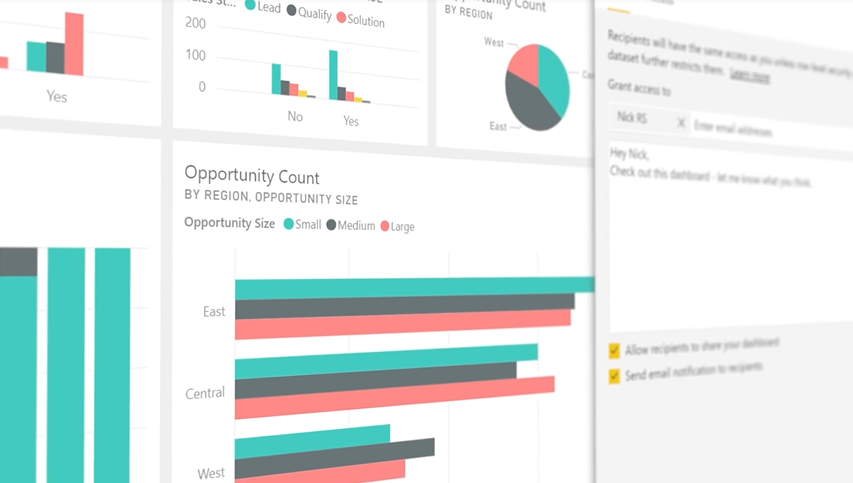 BIG DATA
BIG DATA
 BIG DATA
BIG DATA
 BIG DATA
BIG DATA
Microsoft Corp. today debuted a new version of its Power BI business intelligence platform that features a revamped user experience and analytics features powered by machine learning.
Power BI enables analysts to turn raw data such as sales figures into visualizations that can be easily shared with decision-makers. The product competes in the same category as Tableau Software Inc., which was acquired by Salesforce.com Inc. earlier today for $15.7 billion.
One area where Microsoft hopes to set Power BI apart is the interface department. The company has given the desktop and web versions of the service an Office 365-style makeover, adding a ribbon toolbar similar to the one in Word that provides centralized access to editing options above the work area. The iOS app, in turn, now packs an integration with Microsoft’s Siri voice assistant that allows users to pull up files with spoken commands such as “Hey Siri, open the quarterly report.”
Siri isn’t the only artificial intelligence component inside Power BI. There’s also Q&A, a natural-language processing feature that allows users to dig into data by typing questions into a search bar. Analysts can now extend the tool’s default vocabulary with technical terms unique to their industry, company-specific terms and synonyms to help it answer queries more accurately.
On top of using AI to drive the Power BI interface, Microsoft enables companies to harness machine learning for their analytics projects. Today’s update, announced at the company’s Business Application Summit running this week in Atlanta, doubles down on this use case. The new version of Power BI allows users to process their data with the help of Azure Cognitive Services, a set of managed AI models available on Microsoft’s public cloud.
“Analysts can use these models to extract insights from images by detecting objects,” Arun Ulag, Microsoft’s general manager of Power BI engineering, wrote in a blog post. “Text fields like customer feedback can be analyzed for positive and negative sentiment as well as have key phrases extracted.”
Companies with more advanced requirements have the option to make custom, internally developed AI models available for their analysts. That’s made possible by a new integration between Power BI and Azure Machine Learning, which provides a managed environment for developing neural networks.
Microsoft is releasing the Power BI updates are part of a broader refresh of the Power Platform, the product suite to which the business intelligence service belongs. The lineup includes two other offerings: Flow, an IFTTT-like solution for automating repetitive business tasks, and the PowerApps application development platform.
Microsoft is extending the two products with a new tool dubbed AI Builder also unveiled today. As the name implies, it enables users to add machine learning features to workflows they create in Flow and applications they create in PowerApps. AI Builder provides ready-made machine learning models that can process forms, organize documents, read business cards and perform a number of related tasks.
THANK YOU